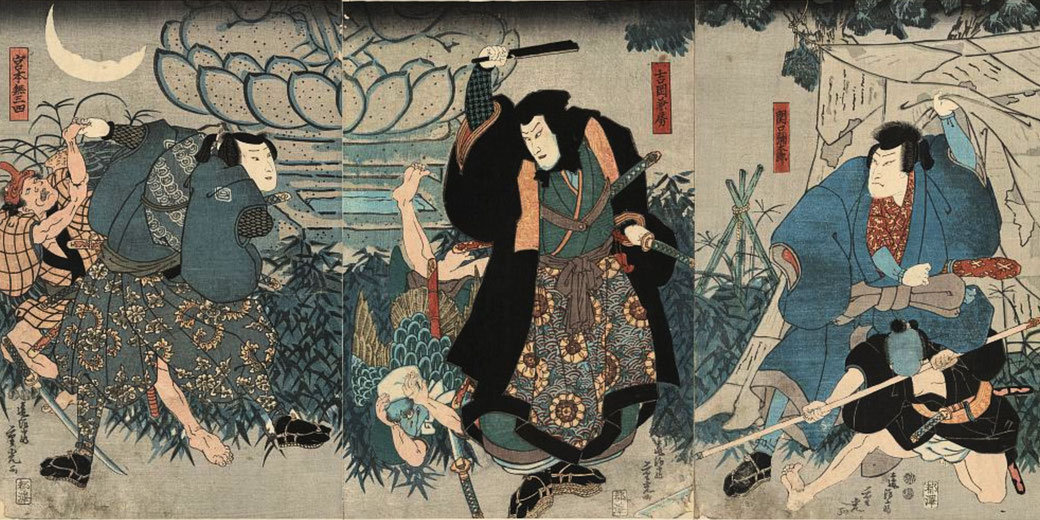Was Miyamoto Musashi the greatest samurai in Japanese history?

Miyamoto Musashi was a legendary Japanese swordsman who lived from 1584 to 1645 during the late Sengoku period and the early Edo period.
Who was Miyamoto Musashi?
He was likely born in Harima Province, which is part of present‑day Hyōgo Prefecture, though some sources place his birth in Mimasaka Province.
He grew up largely without his father, who left him to be raised by relatives. He reportedly fought his first duel in 1596 at the age of twelve or thirteen against a swordsman named Arima Kihei.
Japan at this time had emerged from centuries of warfare between rival clans and was progressing towards peace under the rule of the Tokugawa shogunate.
Musashi became famous for never losing a duel, with traditional accounts claiming he fought about sixty of them.
His unique fighting style was called Niten Ichi‑ryū, which means “Two Heavens as One”. It involved the use of a katana and a shorter wakizashi at the same time.
The method was highly unusual for the period and gave him an advantage in reach, speed, and unpredictability.

His most famous duels with other samurai
One of Musashi’s most famous battles took place on April 13, 1612, on Ganryū‑jima, an island in the Kanmon Straits, when he fought Sasaki Kojirō.
Kojirō was a highly skilled swordsman known for his “swallow cut” technique.
Musashi arrived late to the duel to unsettle his opponent and carved a bokken, a wooden sword, from an oar while he travelled to the fight.
He supposedly killed Kojirō in just one strike, which increased his reputation.
Musashi is often said to have fought in the Battle of Sekigahara in 1600 on the side of the Toyotomi forces, but modern research has questioned whether he took part in the main battle or fought only in secondary engagements.
He went on to also defeat members of the Yoshioka school in Kyoto. The duels culminated in a confrontation at Ichijō-ji Temple where he reportedly fought multiple opponents alone. This further enhanced his fame as an unmatched duellist.
Why Musashi wrote The Book of Five Rings
Later in life, Musashi expanded his pursuits from warrior to scholar. He studied art, painting, calligraphy, and philosophy, and several of his ink paintings, including Shrike Perched on a Withered Branch, survive to this day.
He began writing The Book of Five Rings in 1643 and completed it in early 1645 while he lived in a cave called Reigandō near Kumamoto.
Musashi dedicated the book to his disciple Terao Magonojō, instructing him to preserve the teachings for future generations of swordsmen.
The book was intended as a guide, not only for swordsmanship, but also for achieving effective strategy in any discipline of life.
The text explained five elements, earth, water, fire, wind and void, to describe the principles and mindset, and it is still studied today by martial artists, business leaders, and military strategists.
Was he the greatest samurai in history?
But was he the greatest samurai ever? That depends on how “greatest” is defined.
Musashi was undefeated, which is rare, and his style and writings made him very influential.
However, many other samurai became just as important in history. Perhaps the honour should go to Oda Nobunaga, who broke the power of the Buddhist warrior monks and introduced firearms to the battlefield.
Or maybe Toyotomi Hideyoshi should earn it, since he completed the unification of Japan and launched invasions of Korea.
Perhaps it is Tokugawa Ieyasu, who established the Tokugawa shogunate, which ruled Japan for over two centuries.
While Musashi remained an incredible fighter, he lacked the political leadership or generalship that changed the course of Japan’s history on a large scale.
Because of his unbeaten duelling record, new style, and influence on Japanese martial traditions, Musashi is remembered as Japan’s greatest swordsman.
Yet the question of whether he was the “greatest samurai” remains open to debate, especially since samurai were expected to be loyal retainers to a lord, whereas Musashi spent much of his life as a wandering rōnin.
What do you need help with?
Download ready-to-use digital learning resources
Copyright © History Skills 2014-2025.
Contact via email
With the exception of links to external sites, some historical sources and extracts from specific publications, all content on this website is copyrighted by History Skills. This content may not be copied, republished or redistributed without written permission from the website creator. Please use the Contact page to obtain relevant permission.





